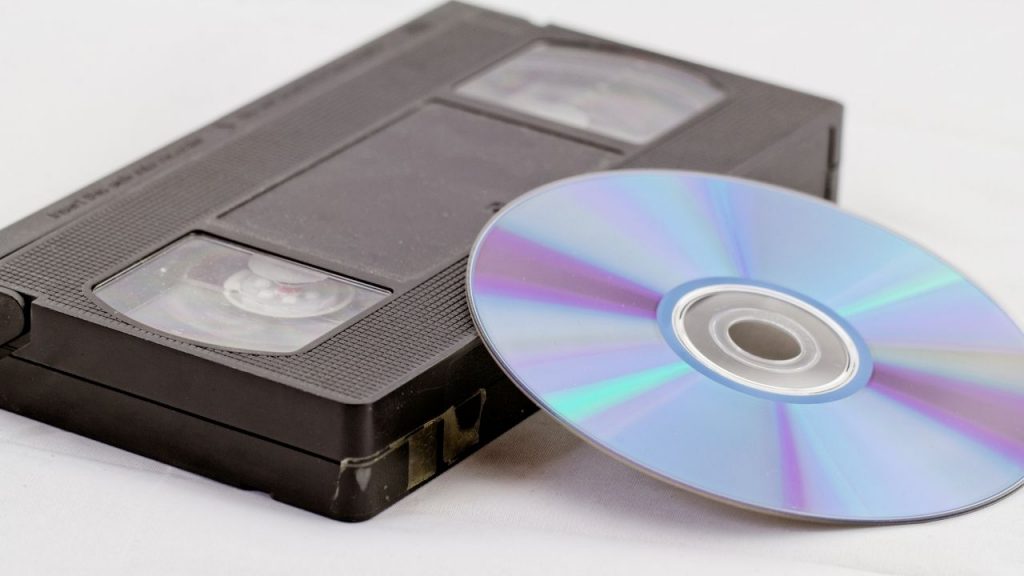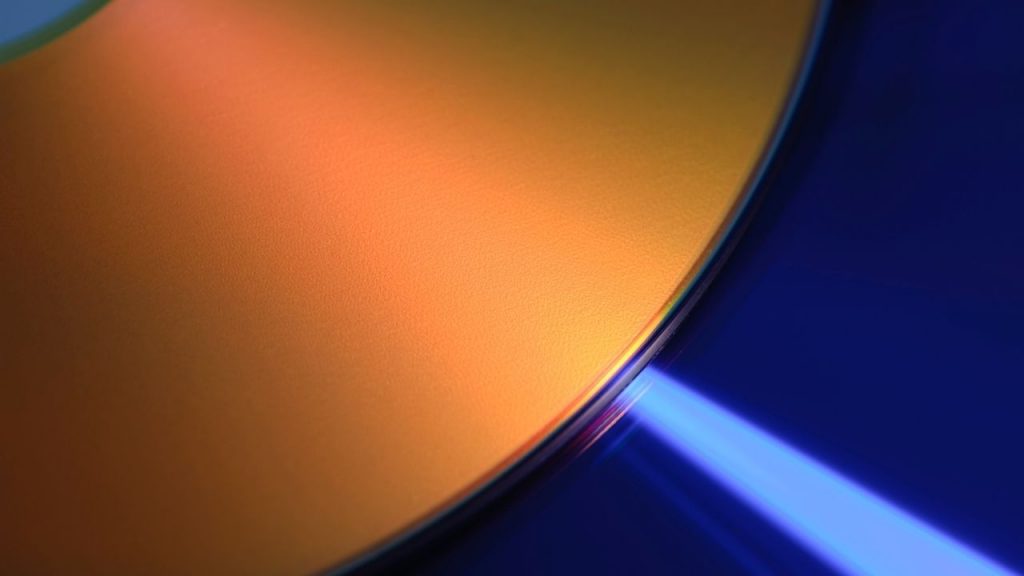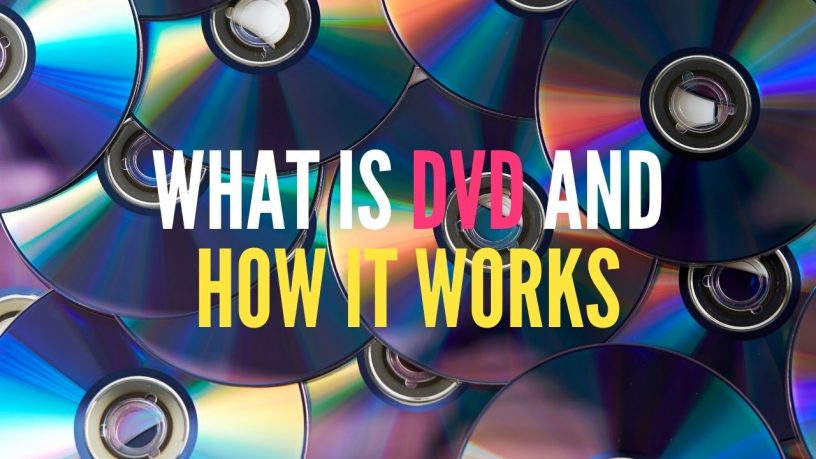Last updated on January 23rd, 2024 at 02:31 am
DVD stands for Digital Versatile Disc. It is also known as Digital Video Disc.
The DVD format saw standardisation in 1995. Electronics giants Philips, Sony, Panasonic and Toshiba formed a consortium for that purpose.
Edge Over VHS
The main idea was to provide a higher-quality alternative to the VHS.

It offered features such as different widescreen aspect ratios, chapter markers and custom menu.
DVD soon emerged as a reliable optical media for the storage of digital content. This included not only video but computer software and any files that can be created with a computer or read by it.
The standout advantage is no video quality loss even after repeated viewings as is the case with VHS with frequent tape rewinding.
Difference Between a CD and DVD
Physically, you can’t tell the difference between a CD and a DVD. They’re of the same size.
Where they differ is in the storage capacity – the size of the digital content they can store.
A standard DVD can store at least seven times more content than a CD.
Also, CD’s data transfer rate ranges from 1.4 to 1.8 MB/s. DVD’s data transfer rate sits at an average of 11Mb/s.
How a DVD Works
DVD uses patterns of dots to store data. A laser is used to burn these dots to the DVD.

Dots are differentiated in terms of spacing and brightness and darkness. These will be read accordingly by a computer DVD drive or a DVD player.
MPEG-2 and DVD
Video in a DVD is compressed in the MPEG-2 format with a resolution of 480p. This allows for a reasonable storage space of 30MB per minute of video.
That said, a two hour novie would take up around 3.6GB of disc space.
Common Types of DVD : DVD-5 and DVD-9
The common types of DVD are DVD-5 and DVD-9.
DVD-5 is called so because it allows for about 5GB of storage space.
DVD-9 offers nearly double the storage space of DVD-5 at 8.5GB of storage space. DVD-9 is actually two DVDs in one. It is one DVD-5 placed on top of another DVD-5 on a single disc. Of course, you won’t see the two discs sticking together. They are two layers of the disc not visible to the naked eye.
Note that DVD-9 isn’t available in DVD+/-RW, only as DVD+/-R.
If you want to burn a movie that is longer than 2 hours you should opt for for a DL (Dual Layer) 8.5GB disc.
Be sure top have a DVD writers which supports dual layer disc burning.
Dual- Sided DVD
A dual-sided DVD can hold about 9.4 GB of data. That’s twice the size of a DVD-5 (4.7GB x 2).
A dual-layer, dual-sided DVD boasts a storage space of 17.1GB of data.
The Future of DVD
DVD used to be the go-to medium for the storege of high-quality video in the late 1990s and early 2000s.
These days with video streaming and video file playback through USB-based storage devices like flash drives and external hard disks, have pushed down DVD off the popularity charts. Still, there’s much interest in DVDs in certain quarters.



